TechRadar Verdict
Inevitably, the Q8FN (Q8DN in the UK) is not as good as the Q9FN, as it only uses around a tenth as many backlight dimming zones as its illustrious sibling. Compared with pretty much all other LCD TVs, though, the Q8FN is still a fantastic TV that delivers exceptional impact and excitement with 4K HDR pictures.
Pros
- +
Extremely bright HDR pictures
- +
Exceptional contrast
- +
Good smart TV system
- +
Strong audio performance
Cons
- -
Limited viewing angle
- -
Some mild backlight blooming
- -
No Dolby Vision
- -
Pricey in the UK
Why you can trust TechRadar
Samsung’s unique take on ‘QLED’ technology (where Quantum Dots are sheathed in a metallic case so that they can be driven harder) set new color and brightness standards in 2017. The one thing that was missing was contrast.
Fortunately Samsung has put that right this year by placing LEDs directly behind the screen rather than around its edges for its top-of-the-range Q9FN series, and the Q8FN/Q8DN models under scrutiny here.
While the Q8FN is the runner up in terms of power to the Q9FN (the Q9 has more advanced systems for improving contrast, black levels and HDR), the Q8 has most of the flagship set’s features at a greatly reduced price.
Should you break open your wallet for Samsung’s highest-end set, or will the Q8FN fit your needs? We’re here to help you decide.
- So what is QLED? Samsung's panel tech explained
- OLED vs QLED: the latest TV tech goes head to head
Price and availability
The Q8FN (called the Q8DN in the UK) sells in three sizes: 75-inch, 65-inch and 55-inch. The 65-inch, reviewed here, is priced at $2,999 (£2,900, AU$4000).
Unfortunately for our European readers, the Q8FN is North America-exclusive. In its place, Samsung is releasing a Q8DN model exclusively in Europe, with identical specs to the Q8FN except for its curved frame and inferior edge LED lighting (see below).
Of course, the Q8FN/Q8DN is part of Samsung's QLED TV series, which includes the Q6FN, Q7FN and Q9FN as well. For comparison, the Samsung Q9FN 65-inch prices in at $3,799 (£3,00, around AU$4,900), and the Samsung Q7FN 65-inch sells for $2,599 (about £1,900, AU$3,300).
Sign up for breaking news, reviews, opinion, top tech deals, and more.

Design
By Samsung’s usually high standards, the Q8FN/Q8DN is something of a plain Jane. It’s deeper than most TVs round the back, for starters. Also, unusually for a Samsung TV, it sits on two fairly basic feet rather than a swanky, centrally mounted stand, and all of its connections appear on the TV rather than on a separate connections box.
The use of wide-set feet means you’ll need a fairly wide piece of furniture to put the TV on if you’re not wall hanging it. Not using an external connections box, meanwhile, means you’ll have lots of cables running into the TV rather than just the one slim cable that connects the Q9FN’s external connections box to its screen.
With that in mind, it’s good to see that the QE65Q8DN’s legs do at least contain channelling to help you minimise cable spaghetti.
The TV still carries Samsung’s Ambient Mode, thankfully. This lets you show a digital artwork - or one of your own photographs - on the screen when you’re not watching it, rather than just having a big black rectangle in your room.
If you’re really clever you could even take a photo of your wall behind the TV and get that image to show on the Q8FN/Q8DN’s screen, so that the only thing you see of the TV is the narrow deep silver frame that runs round the screen.

That said, the Q8 doesn’t seem to fully embrace the subtle Ambient theme of 2018 in the way that the Q7 and Q9 do. Both of these sets use Samsung’s One Mount system, which gives your TV interchangeable and easily removable stands – including one that makes your TV look like a canvas on an easel – and lets you mount your TV on the wall easily. The Q8 has a more traditional stand, much to our chagrin.
The Q9 and Q7 also have an “Invisible Connection” cable that carries all power, video and audio data in one skinny, nondescript 15-meter cord, making it easy to put your TV anywhere. For the Q8, you plug them in through the stand, hiding their appearance somewhat. You’ll just need to stick close to the power outlet.
So the Q8 may be best suited for people comfortable with just plopping their TV on their entertainment center, and who care more about its impressive upgrades on last year’s QLEDs.
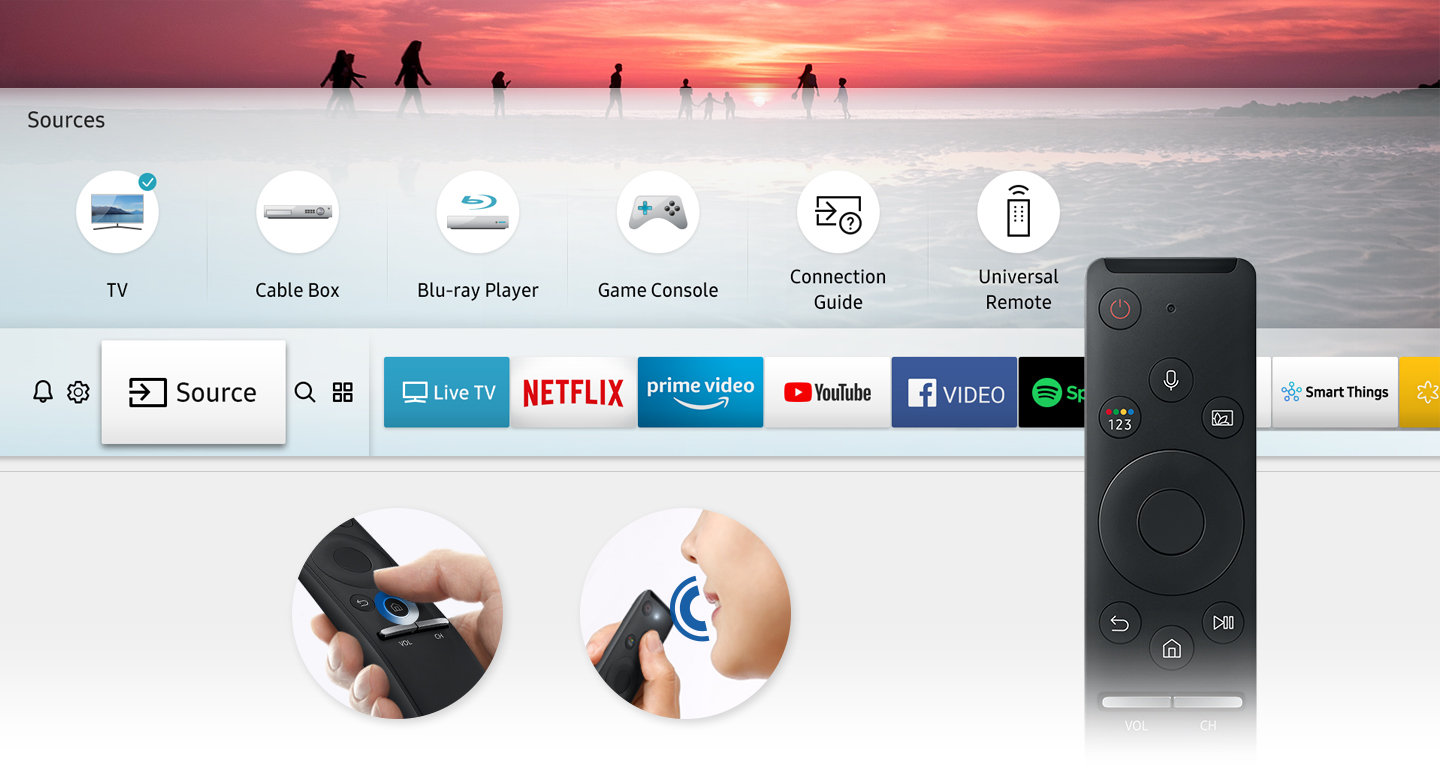
Smart TV Features
The latest version of Samsung’s Eden smart TV platform is mostly excellent. It runs fluidly and slickly, for starters, with none of the sluggishness or bugginess associated with some rival systems (looking at you, Sony Android TV).
It also offers lots of logical connected content links within a compact amount of screen real estate, and is easy to customise. It carries all the main video service apps most TV users will want, too. Including Amazon, Netflix, YouTube, Rakuten (all in 4K and HDR), and all of the UK’s main catch up TV platforms.
The only pity is that Samsung doesn’t roll up its UK catch up apps into a Freeview Play or YouView ‘wrapper’ for extra browsing features.
As well as being able to navigate all of Eden’s smart features easily enough via either of the two remote controls (one normal, one ‘smart’), you can use your voice to access and change pretty much every corner of the TV’s functionality and performance. One useful application of this is that you can search for content across all of the Q8FN/Q8DN’s myriad sources by speaking your search criteria rather than laboriously typing it in using an onscreen keyboard.
It's also possible to cast content from your phone to your Q8 if you have a Samsung device, should you have something like the Samsung Galaxy S8 or S9.

HD/SDR Performance
The good news here is that the Q8FN/Q8DN excels with the ‘legacy’ HD, SDR content most of us actually still spend the majority of our time watching.
HD sources, for starters, are upscaled to the screen’s 4K resolution exceptionally well. They end up looking much more detailed and textured than they do in their native HD form, plus, even better, Samsung’s processing does a great job of removing noise from HD (and, actually, lower) sources before upscaling them. As a result, there’s no exaggeration of source noise in the upscaled images, leaving them looking clean and polished.
Samsung’s ‘HDR+’ system for converting standard dynamic range (SDR) to HDR has also been improved greatly this year. It still aggressively expands the color palette and brightness range of SDR images as it did last year, but this time it does so while retaining more balanced colors and more consistently natural tones.
There are still moments where the HDR+ picture looks slightly forced and processed. But the trade off for this is that Samsung’s HDR upconversion is more aggressive and truly HDR-like than any other rival conversion system.
If you choose not to use HDR+, the Q8F/DN handles the relatively narrow light and color range of native SDR sources pretty much immaculately. The color palette looks rich but also full of subtlety, while contrast looks beautiful, with deep black tones sharing screen space with immaculately judged whites and bright colors.
There’s practically no sign of light ‘blooming’ around bright SDR objects that appear against very dark backgrounds, either. This is in spite of the TV only using 40 separate local dimming zones compared with more than 400 in the Q9FN.
There are a couple of issues with the Q8FN/Q8DN’s HD/SDR performance – some of which actually also impact its 4K HDR playback, too.
First, if you watch the TV from an angle, color saturations reduce, and backlight blooming becomes much more noticeable. Second, Samsung’s Auto motion processing system is a bit over aggressive, causing too many distracting side effects for comfort. Happily the image isn’t too juddery if you prefer - as we did - to generally leave the motion processing off.
4K/HDR Performance
The latest 4K and HDR picture formats are what the Q8FN/Q8DN was made for - and it plays them both brilliantly.
Good quality true 4K sources look extremely sharp and detailed, leaving you in no doubt as to 4K’s advantages over HD. There’s more resolution in color blends too, which helps objects look more three dimensional and solid.
As usual with strong 4K images, too, there’s a much greater sense of depth to large-scale shots. In fact, this TV is particularly strong in this respect thanks to the way it manages to retain the same level of sharpness right across the screen. Some 4K TVs, by comparison, seem to get foreground objects sharp but leave background 4K content looking relatively soft.
This speaks to some unusually powerful video processing in Samsung’s set. Though strangely, as noted in the HD/SDR section, this processing falls down a bit with the set’s Motion Plus system, as the default Auto setting causes noticeable haloing and flickering effects over moving objects.
Fortunately, the picture’s lovely 4K sharpness doesn’t collapse with motion even if you turn Samsung’s motion processing off. Or, if you really do find the judder distracting, you could try setting the motion processing to Custom, with the blur and judder elements both set to around three. This gives a gentle reduction in judder with far fewer unwanted side effects than the Auto setting.
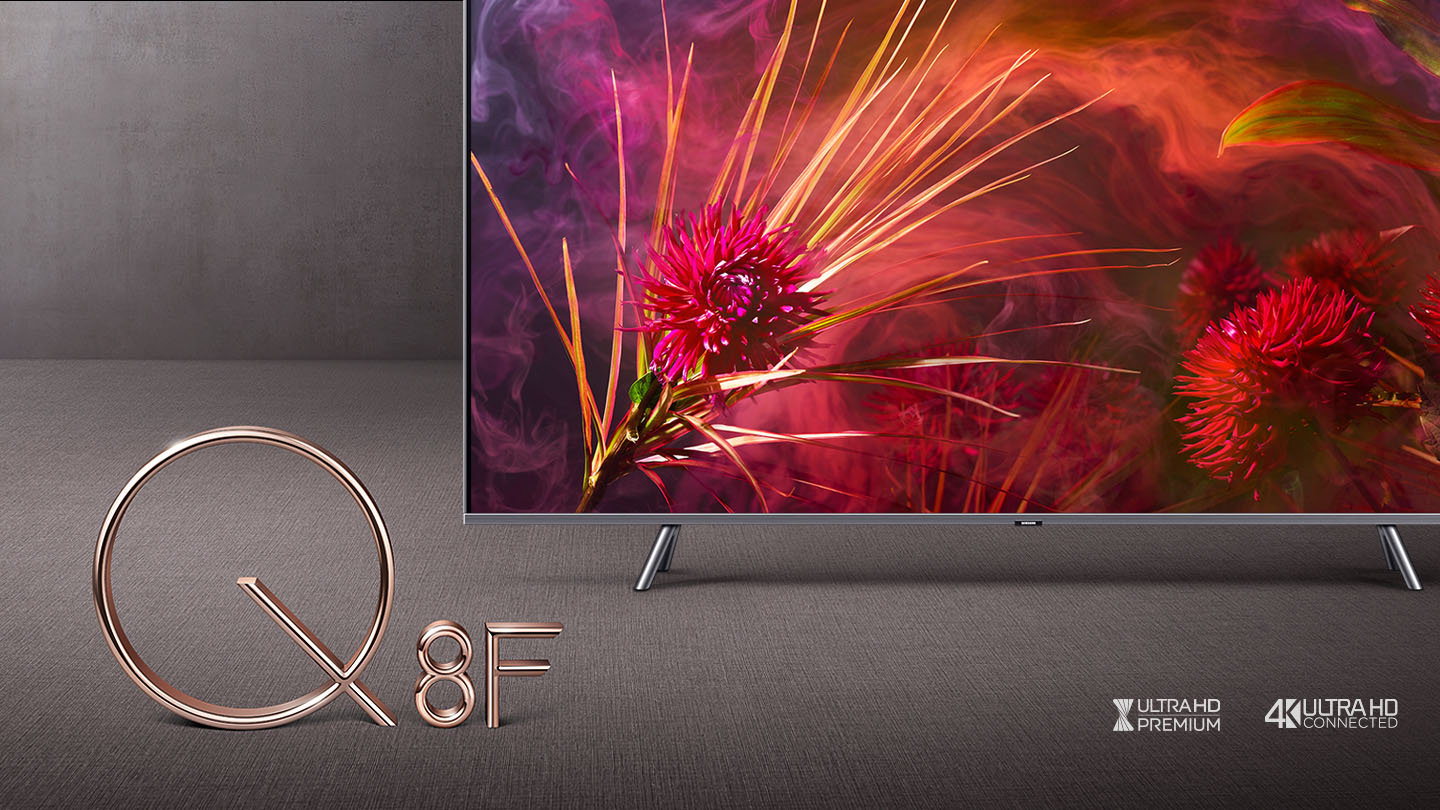
Also worth noting, this is a fantastic TV for HDR content as its direct lighting system manages to produce a whopping 2,100 measured nits of light from a 10% white HDR window. This sort of brightness is unparalleled for the TV’s price point, and ensures that it delivers the upper extremes of HDR’s extended brightness range with spectacular effectiveness and punch. As a result, HDR’s brightest highlights - light glinting on metal, direct shots of the sun, headlights, street lamps and so on - looking blisteringly intense.
Having so much brightness to play with also helps it resolve more subtle tonal information in the very brightest parts of the image - especially as Samsung seems to have improved its tone mapping for 2018.
Samsung’s latest processing system also mercifully reduces almost to nothing the color banding in HDR blends that have plagued Samsung’s past couple of TV generations.
That’s not the only thing that’s great about the colors, though. Its combination of extreme brightness and metal clad Quantum Dots enables it to deliver a huge volume of color – there’s none of the forced, clipped look to the brightest colors that you get with less bright TVs - including OLED models. The way it’s thus able to open up the color scope of even the most aggressively mastered HDR material is gorgeous to behold.
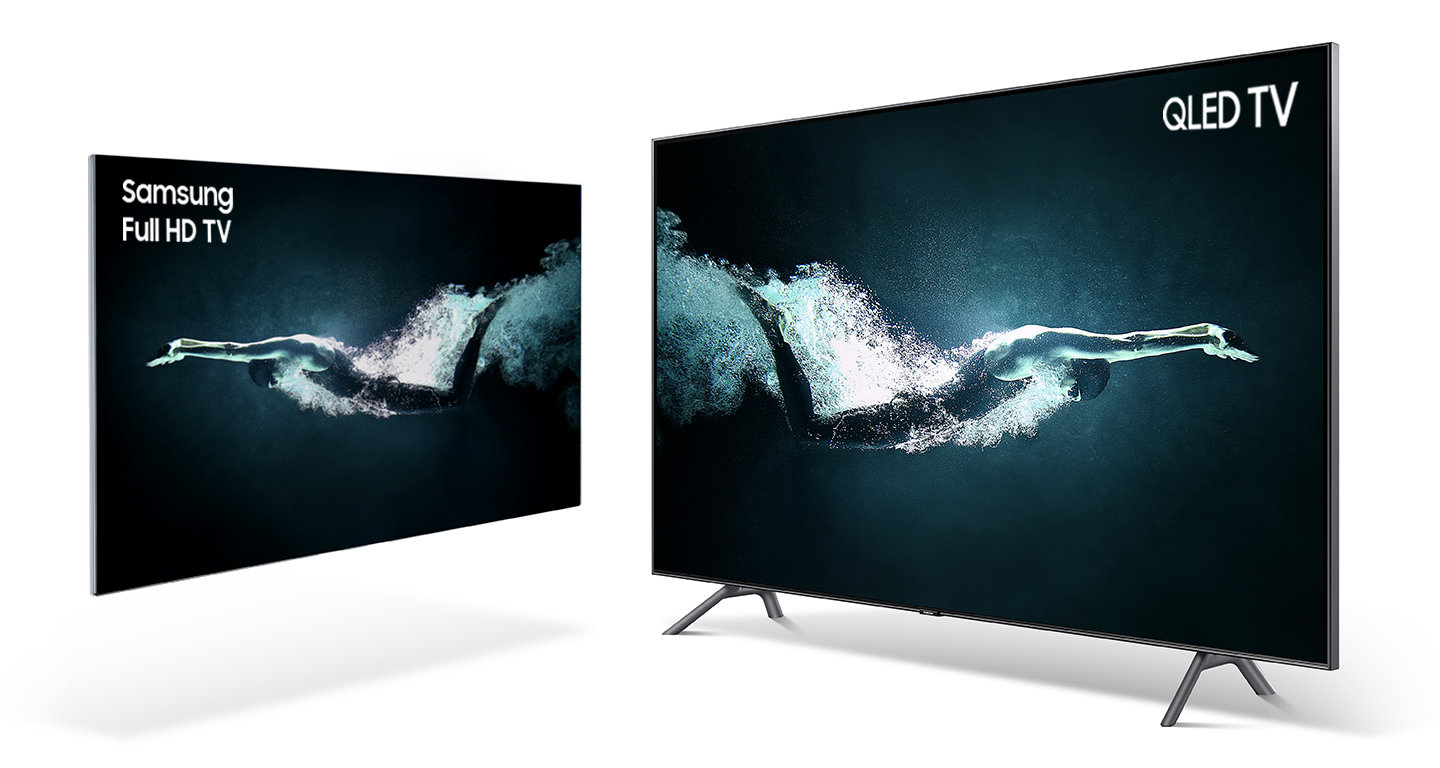
Where the Q8FN/Q8DN arguably most comes into its own versus the competition, though, is with the contrast delivered by its direct lighting/local dimming backlight combination. This allows those huge brightness peaks I mentioned earlier to share screen space with much deeper black colors than you get with most LCD TVs. What’s more, thanks to the excellence of the processing that’s driving the local dimming system, the blackness seldom looks hollow or forced. There’s generally plenty of shadow detail on show to keep dark areas feeling like a natural part of the picture.
While this ability to deliver deep blacks and punchy whites and colours in the same frame undoubtedly makes the QE65Q8DN an HDR star, though, there are a couple of issues like, for instance, that it only uses 40 dimming zones versus the 400-plus zones of the step up Q9FN inevitably has repercussions with HDR playback.
To that end, there is noticeable light ‘blooming’ around very bright objects when they stand out against very dark backdrops. This is reasonably subtle in its intensity, but it can spread a good few centimetres beyond the edges of the bright object. It can also extend into the black bars above and below wide aspect ratio movies at times, at which point it becomes much more distracting. This sort of blooming is pretty much non-existent on Samsung’s flagship Q9FN.
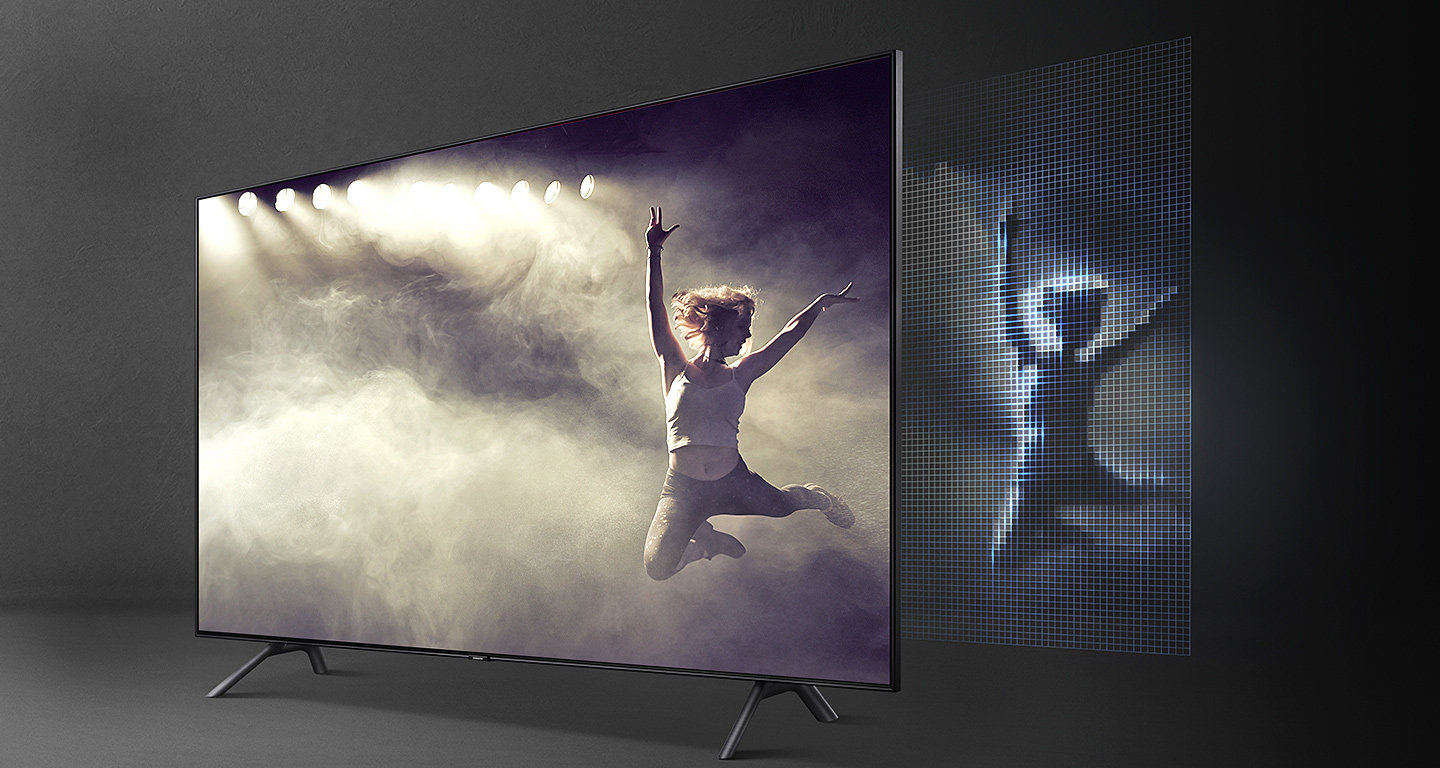
The size of the bloomed areas also means that the Q8’s black levels can look more inconsistent than those of the Q9FN thanks to the scale (in terms of the amount of screen area they cover) of the processing’s backlight adjustments. Black levels generally look a little greyer than they do on the Q9FN too, and the tendency of viewing from angles of more than 25 degrees or so to reduce color intensity and increase the obviousness of the blooming is more pronounced with HDR sources.
That last list of flaws also stands out, of course, versus OLED TVs. Though on the other hand, no OLED TV can hit the HDR-friendly brightness and volumes of colour that the Q8F/DN can.
One last negative about the QE65Q8DN is its lack of support for the premium Dolby Vision HDR format supported by some rival sets - including LG’s OLEDs. Samsung TVs support the relatively new HDR10+ format designed to offer an alternative to Dolby Vision, but HDR10+ sources are currently limited to Amazon Video HDR streams.
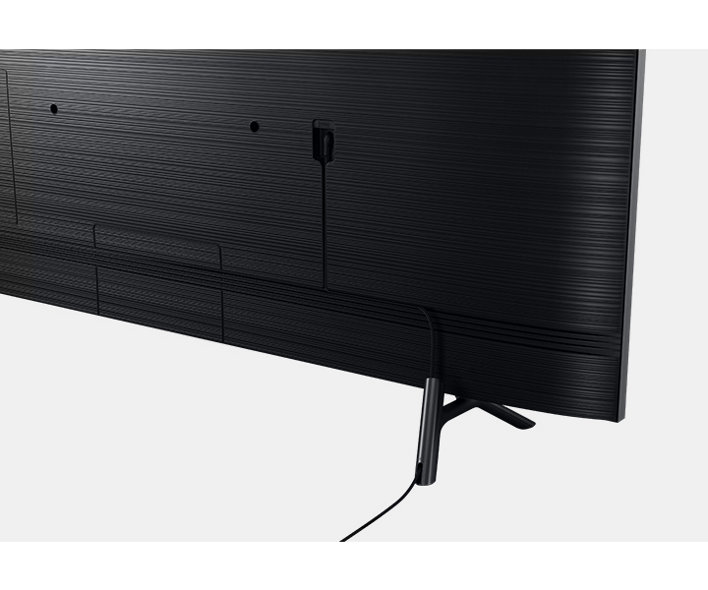
Sound
Despite having 20W less speaker power and one less subwoofer to play with than you get with the Q9FN, the Q8FN/Q8DN sounds really good.
It can go loud without the speakers distorting or the chassis rattling. Vocals sound rich, well rounded and clear, but never forced or dislocated from the rest of the sound mix. Bass is punchier and smoother than usual with built-in TV speakers, and feels neatly integrated with the lower end of the main speakers’ mid range performance. There’s a good sense of scale to the sound stage the TV produces, too.
Yes, the more powerful Q9FN can sound brighter and less thin with very trebly sounds, and has more rumble. But the Q8 sounds way better than most similarly priced rivals.
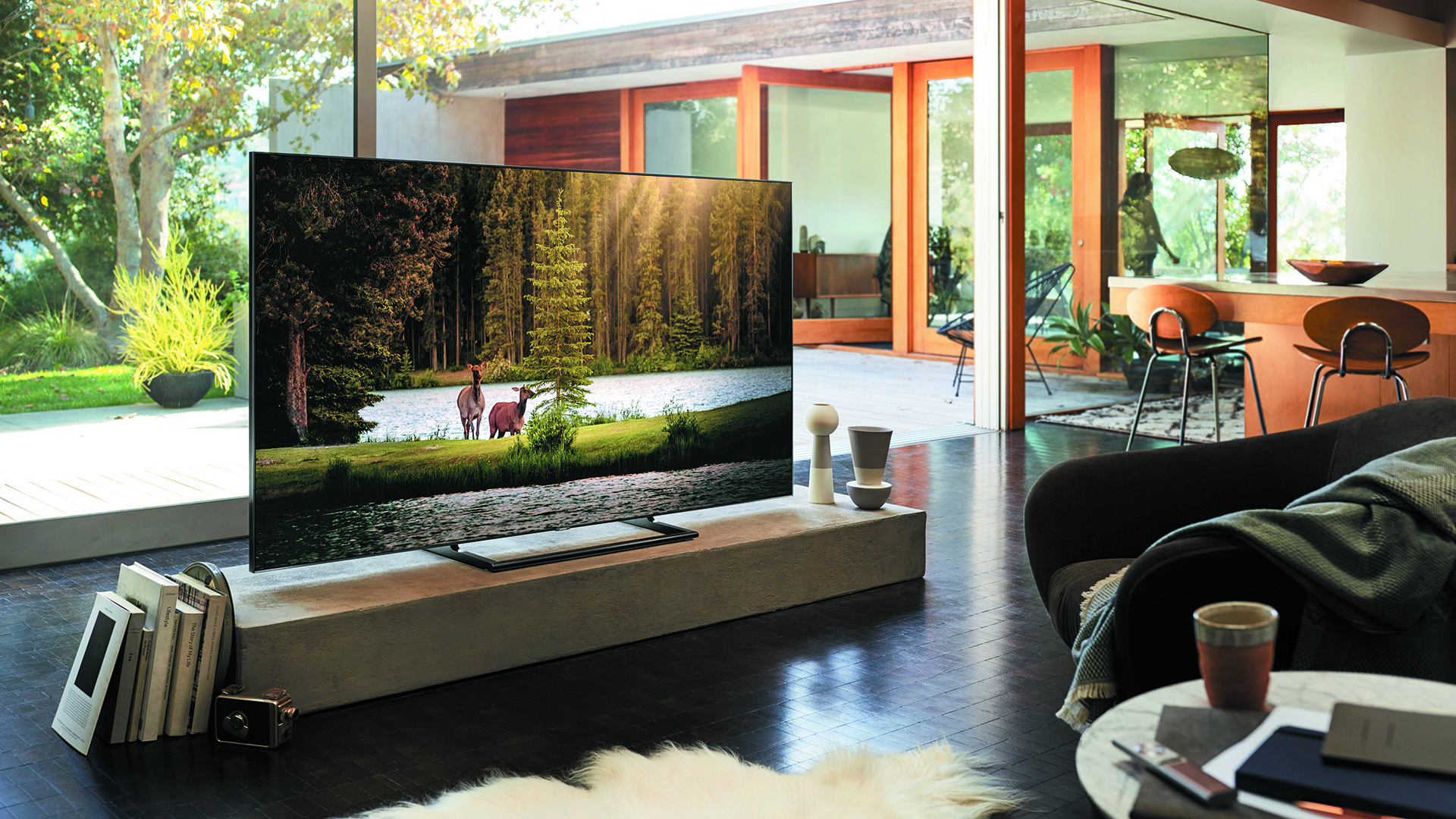
Other panels to ponder
Ironically, the Q8FN/Q8DN’s most persuasive competitor also comes from Samsung, in the shape of the Q9FN. This delivers deeper black levels, even more peak brightness, and far less backlight blooming than the Q8. Of course, it’s hardly unexpected for a brand’s flagship TV to outperform the model below it.
What's strange, however is that in the UK, at the time of writing the QE65Q8DN costs only £100 less than the same sized Q9FN. And that Q9FN delivers more than £100 worth of extra picture quality. There's almost a thousand dollars between the prices of their equivalent QN65Q9FN and QN65Q8FN models and for the UK price to be so close is appalling, honestly.
Providing strong competition for the Q8 is the LG C8 OLED, with its gorgeous black levels, complete freedom from backlight blooming, and wide viewing angles. Though as with all OLEDs, it can’t hit brightness peaks anywhere nearly as high as those of the Q8DN.
For a much cheaper direct backlit LCD option, there’s also the Sony XF90 / X900F. While it's comparable in price this TV isn’t nearly as bright as the Q8DN and suffers more with backlight blooming. But it enjoys some outstanding video processing and a very effective new type of motion processing.
Final verdict
Although it’s clearly a step down from Samsung’s all-conquering Q9FN, the Q8F/DN is still a fantastic TV. Phenomenally bright, sensationally colorful, ultra sharp - it has all the right stuff for getting huge impact from today’s cutting edge picture sources.
The only problem in the UK is that at the time of writing, the newly released QE65Q8DN’s price feels too close to the QE65Q9FN’s price for comfort. Hopefully we’ll see it getting discounted in the coming weeks.
- Here's the entire line-up of Samsung 2019 TVs

John has been writing about home entertainment technology for more than two decades - an especially impressive feat considering he still claims to only be 35 years old (yeah, right). In that time he’s reviewed hundreds if not thousands of TVs, projectors and speakers, and spent frankly far too long sitting by himself in a dark room.
